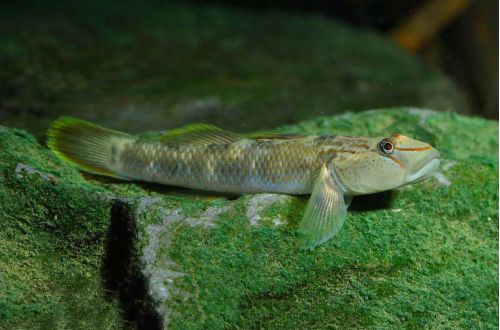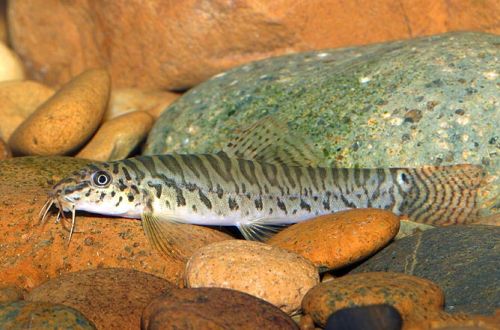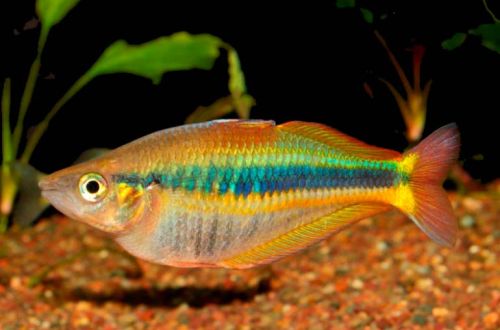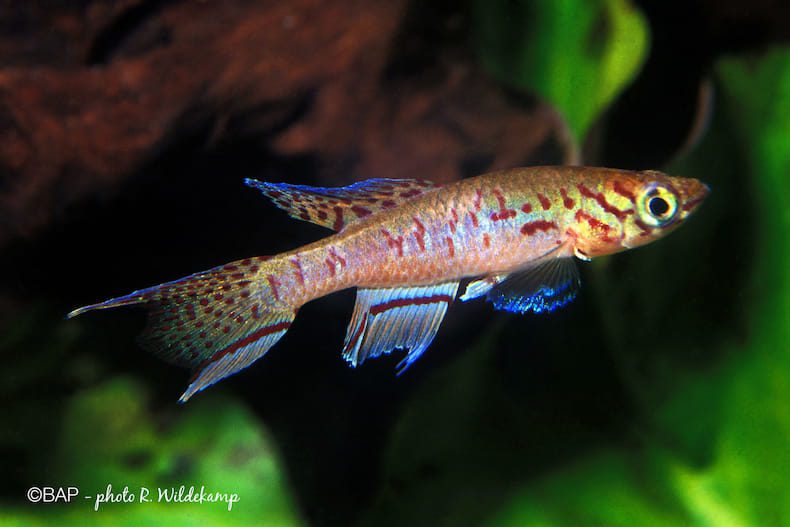
Aphiosemion filamentosum
Afiosemion filamentosum, scientific name Fundulopanchax filamentosu, belongs to the Nothobranchiidae family. Bright beautiful fish. It is rarely found in aquariums due to the great difficulty in breeding. At the same time, they are considered unpretentious and easy to maintain.

Contents
Habitat
The fish comes from the African continent. Found in Togo, Benin and Nigeria. Inhabits swamps and wetlands of streams in coastal tropical forests.
Description
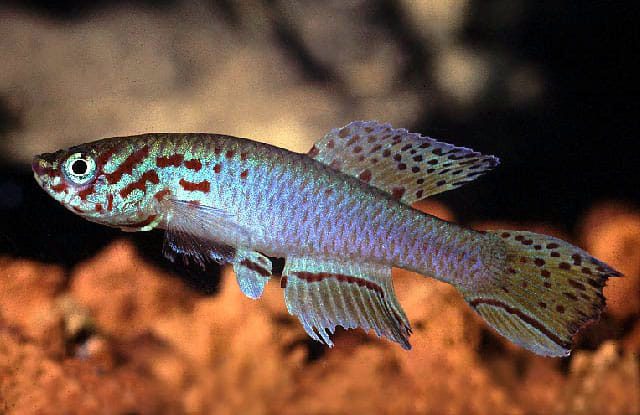
Adult individuals reach a length of about 5 cm. The color of the body is predominantly blue. The head, dorsal fin and upper part of the tail are decorated with red-burgundy specks. The anal fin and the lower part of the caudal fin have a horizontal maroon-red stripe with a blue border.
The described coloration and body pattern is characteristic of males. The females are noticeably more modestly colored.
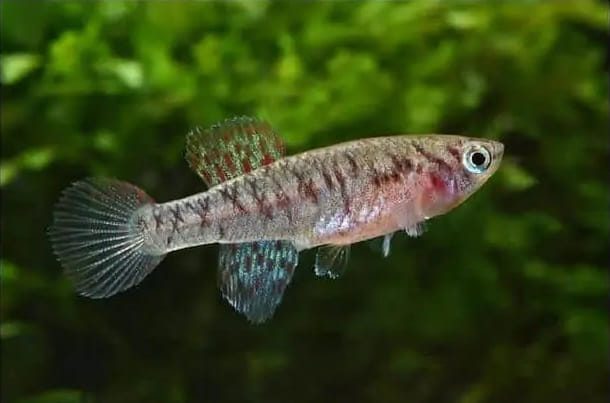
Behavior and Compatibility
Peaceful moving fish. Males compete with each other for the attention of females. Skirmishes are possible in a small aquarium, but injuries are almost never encountered. In small tanks, it is recommended to maintain a group size of one male and several females. Afiosemion filamentosum is compatible with other species of comparable size.
Brief information:
- The volume of the aquarium – from 50 liters.
- Temperature – 20-26°C
- Value pH — 6.0–7.0
- Water hardness – soft (1-12 dGH)
- Substrate type – any dark
- Lighting – subdued
- Brackish water – no
- Water movement – little or no
- The size of the fish is about 5 cm.
- Nutrition – foods high in protein
- Temperament – peaceful
- Keeping a group in the ratio of one male and 3–4 females
Maintenance and care, arrangement of the aquarium
For a group of 3-4 fish, you will need an aquarium with a volume of 50 liters or more. The design uses a dark soft substrate. It is permissible to use soil containing peat or its derivatives, which will further acidify the water. It is necessary to provide a lot of shelters from branches, snags, leaves of trees and thickets of shade-loving plants. The lighting is subdued. Additionally, floating plants can be placed to diffuse light and shade.
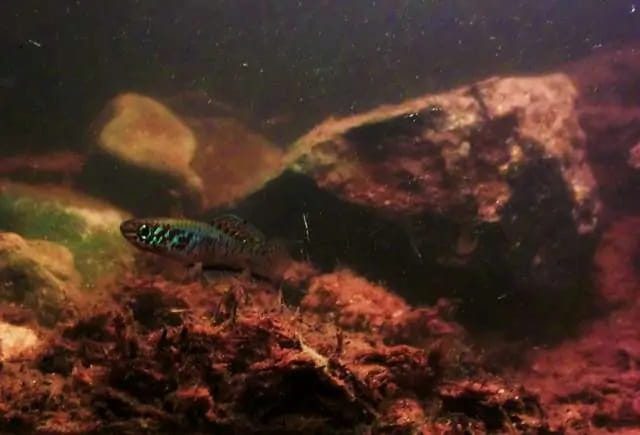
Water parameters should have acidic mild pH and GH values. The comfortable temperature is in the range of 21–23°C, but a deviation of several degrees in one direction or another is acceptable.
The aquarium should definitely be equipped with a lid or other device that prevents the fish from jumping out.
A simple airlift filter with a sponge is recommended as a filtration system. It will be an effective biological filtration agent in small aquariums and will not cause excessive water movement. Afiosemion filamentosum is not accustomed to flow, preferring stagnant waters.
Food
Protein-rich foods should be the basis of the diet. For example, live or frozen bloodworms, large brine shrimp, daphnia, etc. Dry food should only be used as an additive.
Breeding and reproduction
Breeding is preferably carried out in a separate tank. However, it is very problematic to determine when fish should be transplanted into a spawning aquarium. For this reason, fish often breed in the aquarium where they live.
It has been noted that a protein-rich diet (preferably live food) and a gradual increase in temperature to 24–27°C with subsequent maintenance at this level serve as an incentive for spawning. Such an environment imitates the beginning of the dry season – the breeding season of Afiosemions.
In the wild, fish often find themselves in temporary drying up reservoirs. After spawning, the eggs remain in the soil layer of a dried-up reservoir and are in a semi-moist substrate for several months before the onset of the rainy season.
A similar situation must be carried out in an aquarium. The fish lay their eggs directly into the ground. The substrate is removed from the tank and placed in a container with a perforated lid (for ventilation) and left in a dark place for 6–10 weeks. The container should be stored away from light. Do not allow the soil to dry completely and periodically moisten it.
Coir fiber or similar fibrous material is recommended as a substrate. In some cases, a layer of aquatic mosses and ferns is used, which is not a pity to dry.
After the specified time of 6–10 weeks, the substrate with eggs is placed in water at a temperature of about 20°C. The fry appear within a few days. From the moment of appearance, the temperature is gradually increased to the recommended one.



